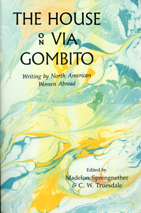Getting there is relatively easy today, so I’m told, but when I visited Tikal in the late 1960s even arriving in Guatemala City was something of an ordeal. Stepping off the plane gave us a shiver of apprehension: armed and suited up military stood with legs apart, and rifles slung across their bodies as we tourists filed off the plane. There was a civil war going on, but we were there anyway. Now I know more about the U.S. supported military government, about the Quiche Mayan people represented by Rigoberta Menchu, who were being tortured, denied basic human rights, and shot for over thirty years. Knowing what I do now, I’m appalled that we took it into our heads to visit Guatemala.
Yet we did, leaving Guatemala City immediately for the more subdued colonial city of Antigua. My memory of the palm-filled open courtyard of the hotel, with its marimba and plashing fountain, includes also my first view of iguanas in the “wild,” posing on our balcony with back fins raised. In the morning we left for Tikal.
Why we wanted to visit this jungle city, I can’t exactly recall. Something about reading American and English archaeologists’ accounts of the ancient city, which they stumbled upon in the midst of the jungle. So subdued were we in middle America, so ignorant were we both that I suspect we also stumbled into the plan. At this point in my life, in my first marriage, my political consciousness was virtually asleep for anything outside the Vietnam war and U.S. civil rights agitation. Now I realize that the U.S. government’s clandestine support for the rightest military regimes in Guatemala derived from the same mind-set of fear and ignorance which kept us losing and losing in Vietnam. Is it possible that various U.S. governments and parts of the populace were so unhinged by civil disobedience that they vented their retaliation on indigenous peoples in other parts of the world?
The tiny plane that flew us from Antigua to Tikal contained Mayan women in their embroidered huipuls and long multi-colored skirts. They brought cages of chickens and baskets of vegetables and other foodstuffs onto the plane which had its seats arranged along the two sides with an open space in the middle. The plane had to land at Lake Atitlan, a huge lake shaped by volcanos, and dotted with Mayan villages along its shore. The plane rattled and shook: we were frightened, though the other passengers seemed not bothered at all.
Setting down in Tikal we seemed about to decapitate the tree tops. The air strip suddenly appeared, in the midst of the jungle, nothing more than open grass. Someone was criss-crossing two flags; the pilot nosed down the tiny craft, and we were bumping along uneven ground before the propellers slowed to a stop. By this time we were two of the four passengers; the other two were American archaeologists who’d brought in a movie from Guatemala City.
Yes, the main temples were immense, still encrusted with vines and grasses. We had to pull ourselves up the main staircase to the tall comblike top from which we could gaze across the trees. Our guide, who also served us meals in the thatched dining area, took us deeper in the jungle where mounds with trees growing out of them indicated temples and other buildings of the once imperial city, waiting for excavation. I remember intending never to forget the huge serpents carved in block-like elegance around door posts; the warriors and gods in profile with huge flared nostrils from which hung rings. I intended never to forget the enormous butterflies and bees, some broader than my hand as they swooped down in brilliant blue and black or various oranges and yellows across our jungle paths. Or the howler monkeys so high in the trees that we never saw them, only heard their hootings.
But more than any of this, I remember midnight terror, lying under the thick thatch of our cabana, when I awoke and heard scratchings and scrapings. Sure some bat or lizard was about to plummet down onto me, I tied a scarf around my hair and pulled the sheet just under my nose.
In the morning, talking to our guide whose English was better than my Spanish, but not up to answering my question: how often do you show movies? Because he’d been describing the treat we had in store for us that evening. We could attend their movie, shown outside on a sheet. It was something with Rita Hayworth, I seem to recall, and his dark eyes gleamed, and he licked his lips.
“How often do you show movies?” I asked in English. He understood. He stopped, leaning over to refill the coffee cups. Then he straightened: “Cada quince,” he said. Over and over I had to have him repeat this. Until finally it registered: quince was a number, it probably meant 15. The phrase signaled “every two weeks.”
We didn’t stay nearly that long, taking the tiny plane out a few days later, with a stop at the huge lake again, where Mayan people crammed on board. We were the only gingos.


Leave a Reply